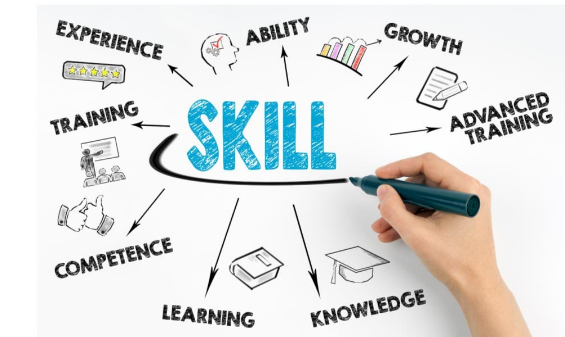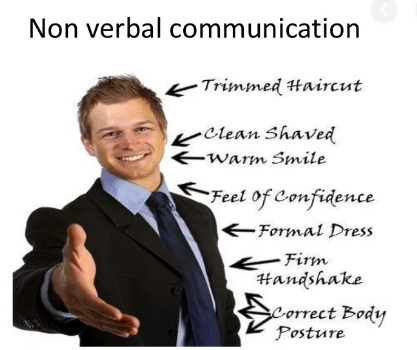
Business networking is leveraging your connections to bring you new opportunities. And it means turning those connections into relationships.
Sounds simple, doesn’t it? Don’t let that fool you, though. Because it involves relationship building, it can be a deceptively complex process.
The aim of marketing is to make selling unnecessary.
–Peter Drucker
Think about it. How many people do you know? How many of these people truly understand what you do? How many of these folks have directed prospects to you as referrals? And how many of those referrals have turned into a business? I’ll wager far fewer than you would like.
Related: 13 Employee Engagement Lessons From Best Employee Brands
Business networking is much more than showing up at networking functions, shaking a lot of hands and collecting a bunch of cards.
Networking for new opportunity must be strategic and focused. Not everyone you meet can help move your business forward. However, everything you do should be driven by the intention to grow your relationships.
Networking your business means you have to be proactive. Very dynamic, as business opportunities rarely come to you on their own. The core of networking is doing something specific each week that is focused on building relationships.
Preparation for a networking event
Prepare open-ended questions
This means questions that ask who, what, where, when, and how as opposed to those that can be answered with a simple yes or no.
This form of questioning opens up the discussion and shows listeners that you are interested in them. A key point.
Have your elevator speech down cold
Have a clear understanding of what you do and why, for whom, and what makes you doing it special or different from others doing the same thing.
To get referrals, you must first have a clear understanding of what you do that you can easily articulate to others.
Business networking … pick out your targets
Know who you want to meet and do your homework on them.
But leave some time for the unexpected attendees.

At the networking event
Wear name tag
Your nametag is your best friend for several reasons.
First of all, a person’s name is the single context of human memory most forgotten. And people are less likely to approach you if they don’t know (or forgot) your name.
Secondly, it’s free advertising for you and your company.
Third, nametags encourage people to be friendly and more approachable.
Confidence is EVERYTHING
You are good enough. You are important enough. You are worthy. Everyone is just someone.
The biggest names in the world that I’ve met have all been regular people when you get down to it.
Is that your experience?
Assume neither of you has lots of time
Try to keep the conversation moving and tight.
This one is tricky, and you have to read the signs. Is the person you’re speaking to giving you the “I need to move on” signals?
Are their shoulders turned away from you? Are they looking around instead of making deep eye contact?
There you have it. Smile politely and make your exit.
Lead with most interesting topic
If you’re going to say, “I’m here to ask about a business partnership,” then start with that.
Most people want to start with soft things like the weather, but in most cases, what’s critical gets buried in trivia.
Don’t do it. Believe me.
Take notes
On the back of business cards, write down quick notes about your interaction with the person.
Did they mention they were looking for graphic designers who specialize in logo design? Or that they recently adopted a puppy?
Write that down. In your follow-up, you could mention someone you know who designs logos and ask how that puppy is doing.
And pay close attention at all times, ok?
Determine common points of interest
The common point of interest is an essential element to every conversation and interaction.
Your objective, as you meet new people, or even as you talk with those you already know, is to discover the points as soon as possible. It connects people to you.
It allows them to feel more comfortable talking to you.
And it increases your approachability as people will be linked to you by the commonality you share.

Watch your body language
Body language creates simple, subconscious non-verbal cues that too many people ignore and it hinders their approachability.
Pay attention to the messages you want your body language to send.
Finish with action
Because you’ve kept it short, because you are letting this person go on to the next thing, your goal now is to decide whether there’s some “there” there.
If yes, then move on to business cards and next steps. If no, then be clean and enjoyable about it. Just say thanks and pleased to meet you, and move on.
Believe me; that’s an excellent way to move on.
Related post: Positive Attitude Is Everything for Customer Engagement
Business cards are for continuing business
If you’re done talking, exchanging a business card is great only when you have further business to do. Send your message quickly.
Within 24 hours is probably the best way. Do you agree?
Networking business opportunities … post networking event
Options for Communication
Your friends, colleagues, customers, and coworkers will choose to communicate with you in different ways. Some will want face to face; some will email, others will call, while others will do a little of everything.
The bottom line is: make all of them available.
On your business cards, email signatures, websites or marketing materials, let people know that can get in touch with you in whatever manner they choose.
A good idea is to give people as many options to contact you as possible. There’s nothing more annoying to a “phone person” than when she discovers she can’t get a hold of you unless she emails you.
Reach out
You don’t have to physically meet a person to network with them. If the individual you’d like to chat with has a blog or wrote an article you liked, reach out to them. The worst thing that could happen is they say no or don’t give a reply. The best things that could happen are virtually limitless.
Follow through
When people give you referrals, your actions are a reflection on them.
Respect and honor that and your referrals will grow.
Summary
Your results will vary.
First, all you shy people who have been clenching your jaw while reading this, it’s okay. I get it. I know that it’s a lot easier to do this when you’re not shy. Me? I tend to be on the private side. I just push hard NOT to be shy when it’s important.
Second, remember, things don’t usually follow a formula. That’s okay. Do what makes sense at the moment.
Finally, I want to re-stress that these are thoughts on what works best in meetings. Give them a try and push yourself to try new things and approaches with people.














